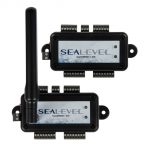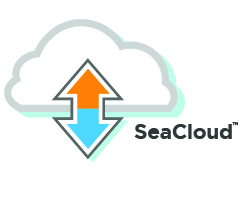Rainwater Harvesting Expands with IoT

Rainwater harvesting is the process of collecting, storing, purifying and conveying rainwater. Rainwater harvesting is cost efficient and conserves water and energy. Collecting rainwater reduces soil erosion, stormwater runoff, flooding and the pollution of surface water from fertilizers and pesticides. Rainwater is an excellent source for landscape irrigation and reduces the demand on ground water.
Stages of Rainwater Harvesting
- Catchment – the surface area that directly receives rainfall, usually a roof. A catchment area can also be a courtyard or terrace but water from these areas requires more filtration.
- Conveyance – gutters and spouts that carry rainwater from the catchment area to storage. This process may occur above or below ground.
- Storage – tanks or barrels that hold rainwater for later use. Storage can be below ground, above ground or partially buried. Storage also requires an overflow system for excess water and a pre-filtration system to keep out debris from the catchment area.
- Filtration – generally includes three stages: a sediment filter that removes particles, a carbon filter that removes contaminants and an ultraviolet system that disinfects and removes bacteria. Water used for irrigation will require less filtration than water intended for potable use.
- Distribution – pumps and pipes that carry water from storage to point-of-use, like a sink or toilet.
IoT Apps and Smart Tools
An app has been created to encourage rainwater harvesting in Africa. An individual provides the app with their location and the dimensions of their roof. Using local weather data, the app calculates the amount of water that can be harvested. The app also suggests the size of harvesting system needed to support the number of household members and its cost.
Smart tanks monitor rain weather patterns, water levels in storage and when and for what stored water is used. From this information, owners can determine how often they use stored water, learn what tasks use the most or least water, predict when their tank will refill and make decisions to optimize their water usage. Smart tanks also remind owners of necessary maintenance and send alerts regarding leakage or other issues.
IoT for Energy Harvesting and a Prosumer Market
IoT turns rainwater harvesting into its own energy source. Energy is collected through the movement of water droplets across thin films of material, capable of generating up to five volts of electricity. The material can be installed in catchment areas or plumbing and used to power IoT devices in the rainwater harvesting system such rain gauges, monitors and water quality sensors.
Blockchain enables rainwater trading. As rainwater harvesters collect and use water, they can also sell excess water. Blockchain allows for a secure network and easy management of transactions that could support a prosumer market separate from water companies. Blockchain can also verify important factors like water quality.
SeaConnect industrial IoT devices offer a variety of digital, analog and sensor I/O options coupled with SeaCloud’s built-in event engine to trigger actions. The SeaConnect 370 IoT devices is ideal for a variety of applications including broadcast automation, data acquisition, environmental monitoring and facility management.
SeaCloud offers a secure, robust, scalable, Industrial Internet of Things (IIoT) software platform that is designed to monitor, track, analyze and control data from SeaConnect and other Sealevel I/O devices. Options are available for data-at-rest applications such as condition monitoring and operational intelligence as well as data-in-motion activities to provide real-time, actionable information.
IIoT for Integrators
IIoT integration requires a deep understanding of a customer’s existing hardware in order to capitalize on proven technology and systems. Together with IIoT integrators, Sealevel is revolutionizing the way companies approach IIoT integration and enabling them to adopt predictive maintenance models, operate more efficiently and realize new revenue streams.
Categories:


